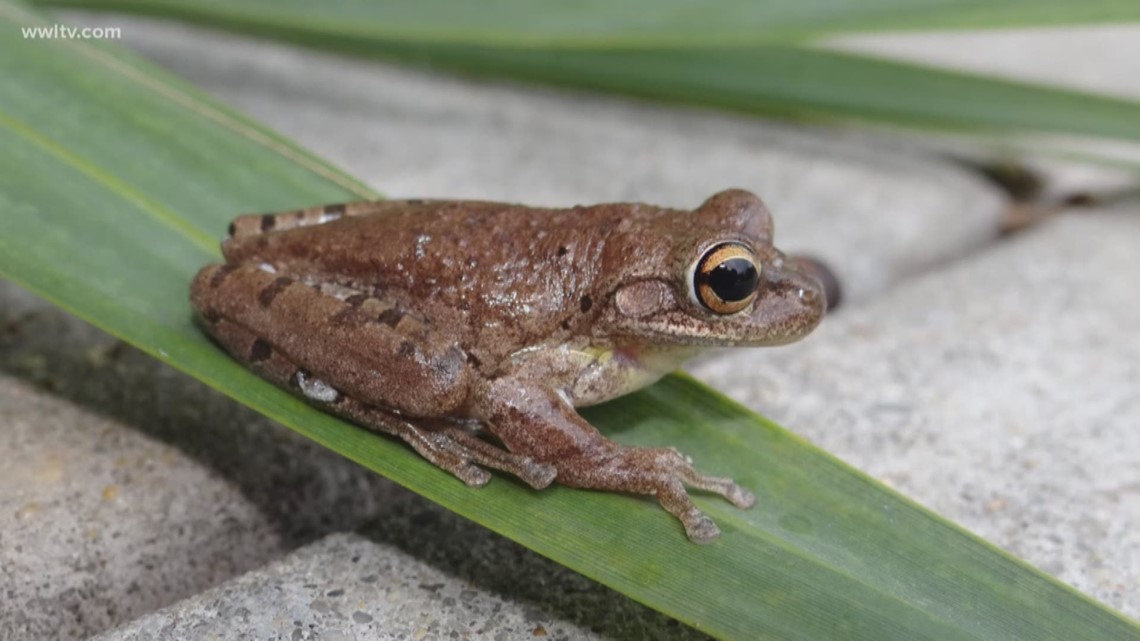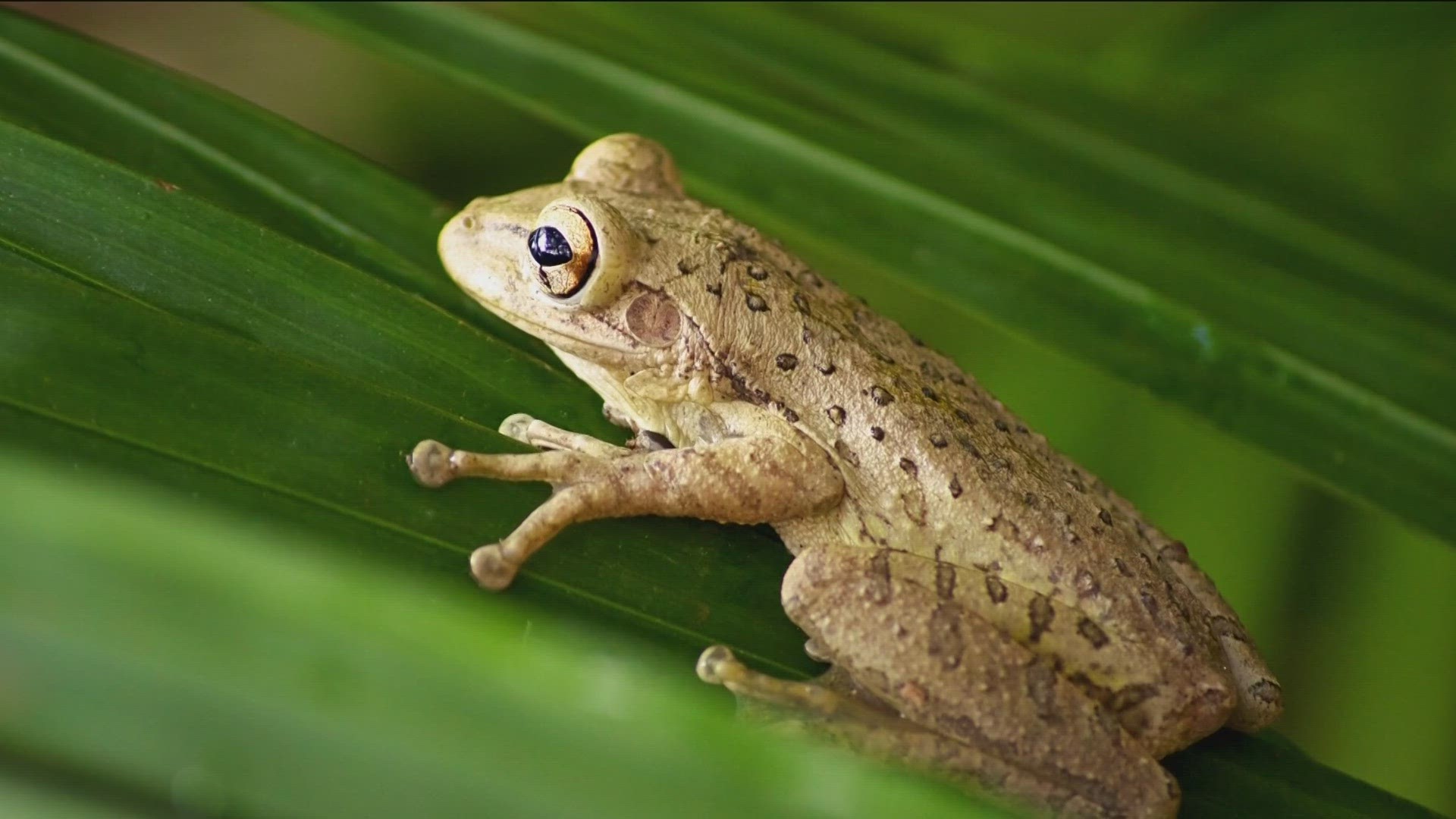SAVANNAH, Ga. — A new frog species has made its way to the Peach State and biologists say they are a threat to our ecosystem. So, just how much of a threat are they?
How did Cuban tree frogs get to Georgia
Cuban tree frogs are large frogs that originated in Key West and are typically found in Florida. They have gradually spread to Georgia, particularly in the Savannah, Brunswick and St. Simons areas.
The frogs made their way to the Peach State by hitchhiking on vehicles, campers, RVs and boats.
"What we really hope we could do is prevent further expansion. Mostly, they get around with our help, and if we could do something about that and maybe jump on new populations as they pop up-- we can keep them from spreading," Georgia Department of Natural Resources Senior Wildlife Biologist Daniel Sollenberger said.
Are Cuban tree frogs a threat?
No, Sollenberger said, while they aren't a direct threat to metro Atlanta. He added they are a threat to some native tree frogs.
"We have six species of native tree frogs in Georgia. And Cuban tree frogs really like to eat those. They'll eat pretty much anything they can fit in their mouth," Sollenberger said.
Are Cuban tree frogs poisonous?
Sollenberger said while the Cuban tree frogs aren't particularly dangerous, their skin does produce poison-- like many other amphibians.
"With Cuban tree frogs, it is strong enough that it could badly irritate your eyes. You wouldn't want to put it in your mouth," he added.
How to identify a Cuban tree frog


Cuban Tree Frogs average between one and four inches in length, their skin color ranges from gray to brown to blue-green and they have big toe pads.
You can also identify a Cuban tree frog by its size.
"The easiest thing would be if you find a tree frog that's larger than, you know, the palm of your hand. That's probably a Cuban tree frog," Sollenberger said.
What to do if you see a Cuban tree frog
If you do find a Cuban tree frog in your yard, Sollenberger said you can remove it and humanely euthanize it.
Old pools, in particular, are a breeding ground for them due to the standing water, according to Sollenberger.
If you're still uncertain if it's a Cuban tree frog, Sollenberger said you can catch the frog, put it in a clear container and contact DNR officials to identify it.
Be sure to use gloves due to the frog's skin secretion which can irritate your eyes and nose. However, if you were to handle one, be sure to wash your hands.
You can also take a picture of the frog and email it to DNR for identification online here.

